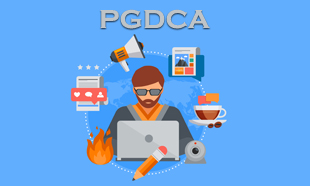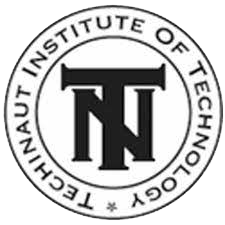9
POST GRADUATE DIPLOMA IN COMPUTER APPLICATION" at BOSCOTECH, Tarapur-Khelma, Assam, provides advanced training in computer applications at the prestigious Techinaut Institute of Technology, preparing graduates for professional excellence.
In the rapidly evolving digital landscape, proficiency in computer applications is essential for individuals aspiring to excel in various fields, from business to academia. Recognizing the importance of equipping students with comprehensive computer skills, BOSCOTECH Institute offers a prestigious one-year "Post Graduate Diploma in Computer Application" course. Situated in TARAPUR-KHELMA, CACHAR, ASSAM, under the auspices of Techinaut Institute of Technology, this Course serves as a springboard for students to harness the power of technology and propel their careers forward. Let's delve into the objectives and curriculum of this transformative Course.
THE OBJECTIVE OF THE COURSE:
The primary objective of the "Post Graduate Diploma in Computer Application" course is to provide students with a comprehensive understanding of computer applications and their practical applications in various domains. By the end of the Course, students will:
- Acquire proficiency using fundamental computer applications such as word processing, spreadsheet management, and presentation software.
- Gain insights into computer organization, operating systems, and information technology, enabling them to understand the underlying principles of computing systems.
- Develop practical skills in internet usage, including web browsing, e-mail communication, and online research.
- Familiarize themselves with programming fundamentals and algorithmic problem-solving techniques, laying the groundwork for further study or professional development in computer science.
- Explore the societal impact of information technology, including ethical considerations, privacy concerns, and emerging trends shaping the digital landscape.
- Apply their knowledge and skills to real-world scenarios through practical exercises, projects, and case studies, fostering critical thinking and problem-solving abilities.
BASICS OF COMPUTER
The Course begins with an introduction to the basics of computers, covering topics such as computer history, computer generations, and hardware components. Students also learn about input and output devices, storage devices, and the role of the central processing unit (CPU) in computer operation.
COMPUTER APPRECIATION
In this section, students gain an appreciation for computers' role in modern society. They explore their applications in various fields, including education, healthcare, finance, and entertainment. Additionally, students learn about emerging technologies such as artificial intelligence, machine learning, and the Internet of Things (IoT).
COMPUTER ORGANIZATION:
Understanding computer organization is essential for optimizing performance and troubleshooting issues. Participants delve into memory hierarchy, CPU architecture, input/output systems, and peripheral devices. They also learn about binary representation, digital logic circuits, and the von Neumann architecture.
OPERATING SYSTEM:
An operating system serves as the bridge between hardware and software, facilitating the execution of programs and managing system resources. Students explore the functions and components of operating systems, including process management, memory management, file systems, and user interfaces. They also gain hands-on experience with popular operating systems such as Windows, macOS, and Linux.
MS WORD PROCESSING:
Word processing software enables users to efficiently create, edit, and format text documents. Participants learn to use Microsoft Word, one of the most widely used word processing applications. They explore features such as formatting text, inserting images, creating tables, and using templates to streamline document creation.
MS SPREADSHEET PACKAGE:
Spreadsheets are invaluable tools for data analysis, budgeting, and financial modelling. Students learn to use Microsoft Excel, a powerful spreadsheet application, to perform calculations, create charts, and analyze data. They explore functions, formulas, data validation, and conditional formatting techniques to manipulate and visualize data effectively.
MS PRESENTATION PACKAGE:
Presentation software allows users to create visually engaging slideshows for meetings, seminars, and conferences. In this section, students learn to use Microsoft PowerPoint to design professional presentations. They explore slide layouts, multimedia integration, animations, and transitions to create dynamic and engaging presentations.
INFORMATION TECHNOLOGY AND SOCIETY:
Information technology (IT) has transformed how we live, work, and communicate. Participants examine IT's societal impact, including its influence on education, healthcare, governance, and entertainment. They also explore ethical considerations, privacy concerns, and digital divide issues associated with its widespread adoption.
INTRODUCTION TO THE INTERNET:
The Internet is a global network that connects millions of devices worldwide, enabling communication, collaboration, and information sharing. Students learn about the history and evolution of the Internet, the structure of the World Wide Web, and the role of Internet protocols and standards in facilitating data exchange.
INTERNET NETWORK:
Understanding how networks operate is essential for effectively navigating the Internet. Participants explore network architectures, communication protocols, and topologies. They also learn about IP addressing, subnetting, routing, and network security principles to ensure safe and reliable internet connectivity.
E-MAIL:
Electronic mail (e-mail) is a widely used communication tool for exchanging messages over the Internet. In this section, students learn how to create, send, receive, and manage e-mail messages using popular e-mail clients such as Gmail, Outlook, and Yahoo Mail. They explore e-mail etiquette, attachments, folders, and filtering techniques to organize their inbox effectively.
INTRODUCTION TO PROGRAMMING:
Programming is the process of writing instructions for computers to execute. Participants are introduced to programming fundamentals, including variables, data types, operators, control structures, and functions. They also learn about algorithmic problem-solving techniques and develop basic programs using a high-level programming language such as Python or Java.
ALGORITHMS FOR PROBLEM-SOLVING:
Algorithms are step-by-step procedures for solving computational problems efficiently. Students learn about algorithm design techniques such as iteration, recursion, and divide-and-conquer. They also explore standard algorithms and data structures, including searching, sorting, and graph algorithms, to solve real-world problems effectively.
Practical Applications and Case Studies:Students apply their knowledge and skills to practical exercises, projects, and case studies throughout the Course. They work on real-world scenarios that simulate typical computing tasks in various domains, including business, education, and research. By applying theoretical concepts to practical challenges, participants gain valuable hands-on experience and develop critical thinking and problem-solving abilities.
Final Assessment and Certification:After the Course, students undergo a final assessment to evaluate their proficiency in computer applications and problem-solving skills. Those who demonstrate competency receive a prestigious Post Graduate Diploma in Computer Application from Digital Binary Computer Institute, validating their expertise and enhancing their credentials for career advancement in the dynamic field of information technology.
CONCLUSION:
The Post Graduate Diploma in Computer Application course offered by BOSCOTECH at the Techinaut Institute of Technology in TARAPUR-KHELMA, CACHAR, ASSAM, provides a comprehensive and practical learning experience for students seeking to excel in information technology. By covering a wide range of topics, from computer basics to advanced programming and algorithmic problem-solving, this Course equips participants with the skills and knowledge needed to thrive in the digital age. Through hands-on exercises, projects, and case studies, students emerge from the Course with a deep understanding of computer applications and the confidence to tackle complex computing challenges in diverse domains. Whether pursuing career opportunities in software development, data analysis, or IT consulting, graduates of this Course are well-prepared to meet the demands of the modern workplace and contribute effectively to organizational success.


